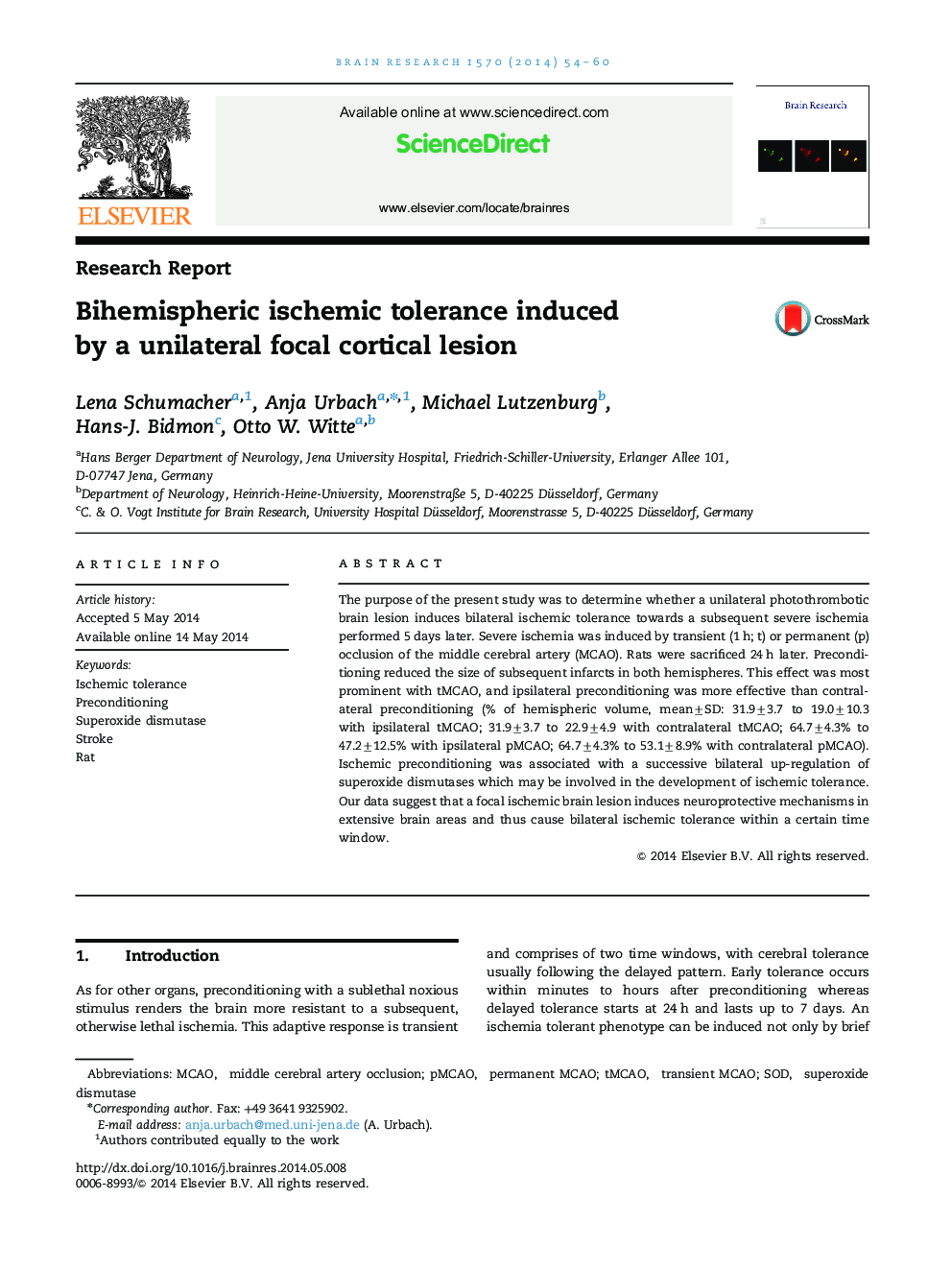| Article ID | Journal | Published Year | Pages | File Type |
|---|---|---|---|---|
| 6263326 | Brain Research | 2014 | 7 Pages |
â¢Unilateral focal ischemic lesion induces bilateral ischemic tolerance.â¢Unilateral focal ischemic lesion induces bilateral superoxide dismutase upregulation.â¢Ipsilateral preconditioning is more effective than contralateral preconditioning.â¢Preconditioning is more effective with transient MCAO than with permanent MCAO.
The purpose of the present study was to determine whether a unilateral photothrombotic brain lesion induces bilateral ischemic tolerance towards a subsequent severe ischemia performed 5 days later. Severe ischemia was induced by transient (1 h; t) or permanent (p) occlusion of the middle cerebral artery (MCAO). Rats were sacrificed 24 h later. Preconditioning reduced the size of subsequent infarcts in both hemispheres. This effect was most prominent with tMCAO, and ipsilateral preconditioning was more effective than contralateral preconditioning (% of hemispheric volume, mean±SD: 31.9±3.7 to 19.0±10.3 with ipsilateral tMCAO; 31.9±3.7 to 22.9±4.9 with contralateral tMCAO; 64.7±4.3% to 47.2±12.5% with ipsilateral pMCAO; 64.7±4.3% to 53.1±8.9% with contralateral pMCAO). Ischemic preconditioning was associated with a successive bilateral up-regulation of superoxide dismutases which may be involved in the development of ischemic tolerance. Our data suggest that a focal ischemic brain lesion induces neuroprotective mechanisms in extensive brain areas and thus cause bilateral ischemic tolerance within a certain time window.
